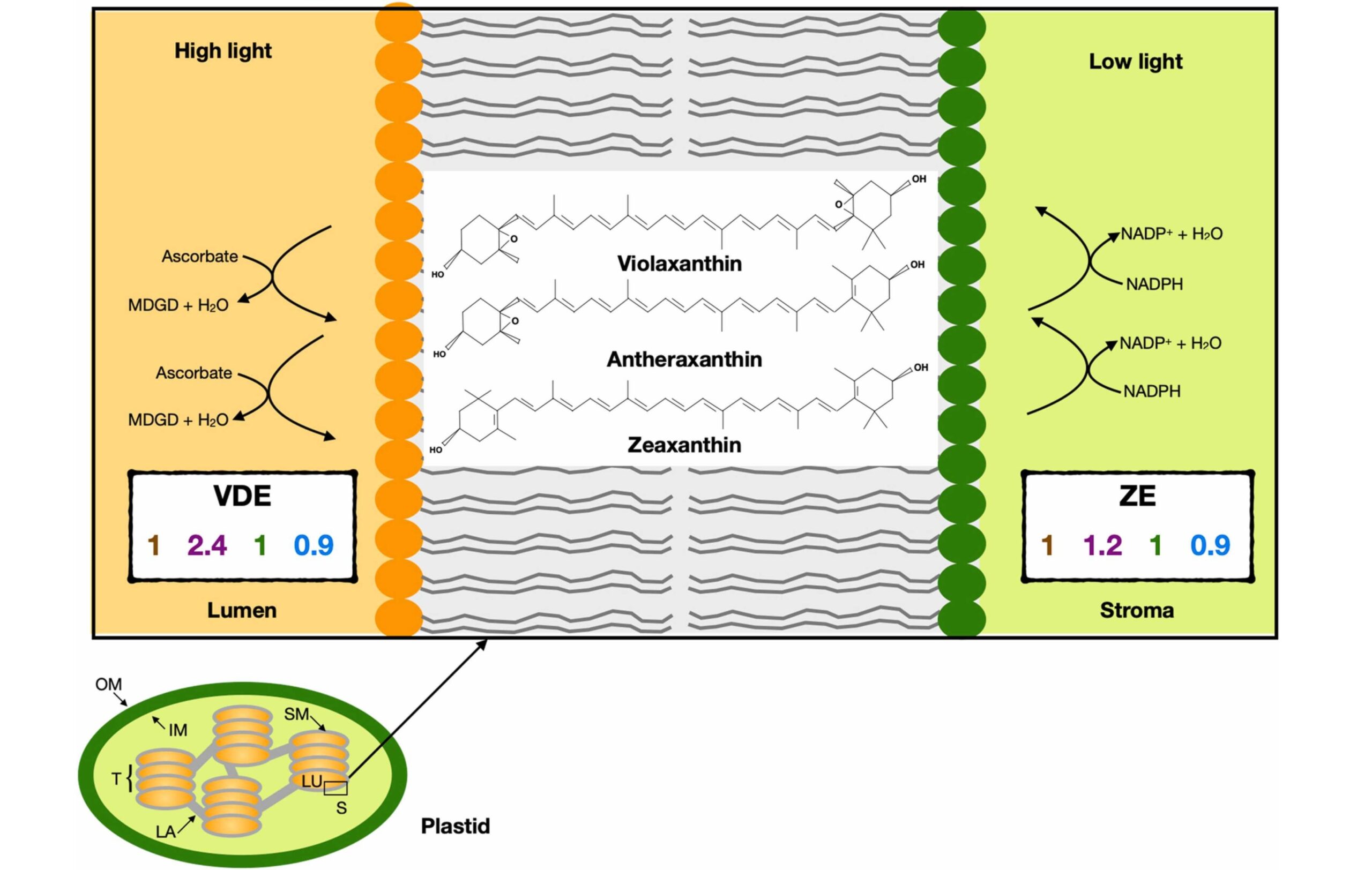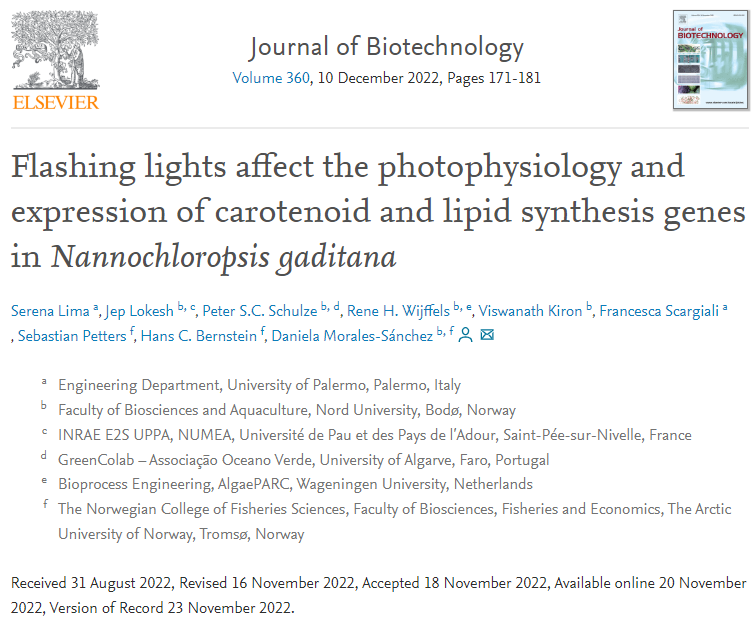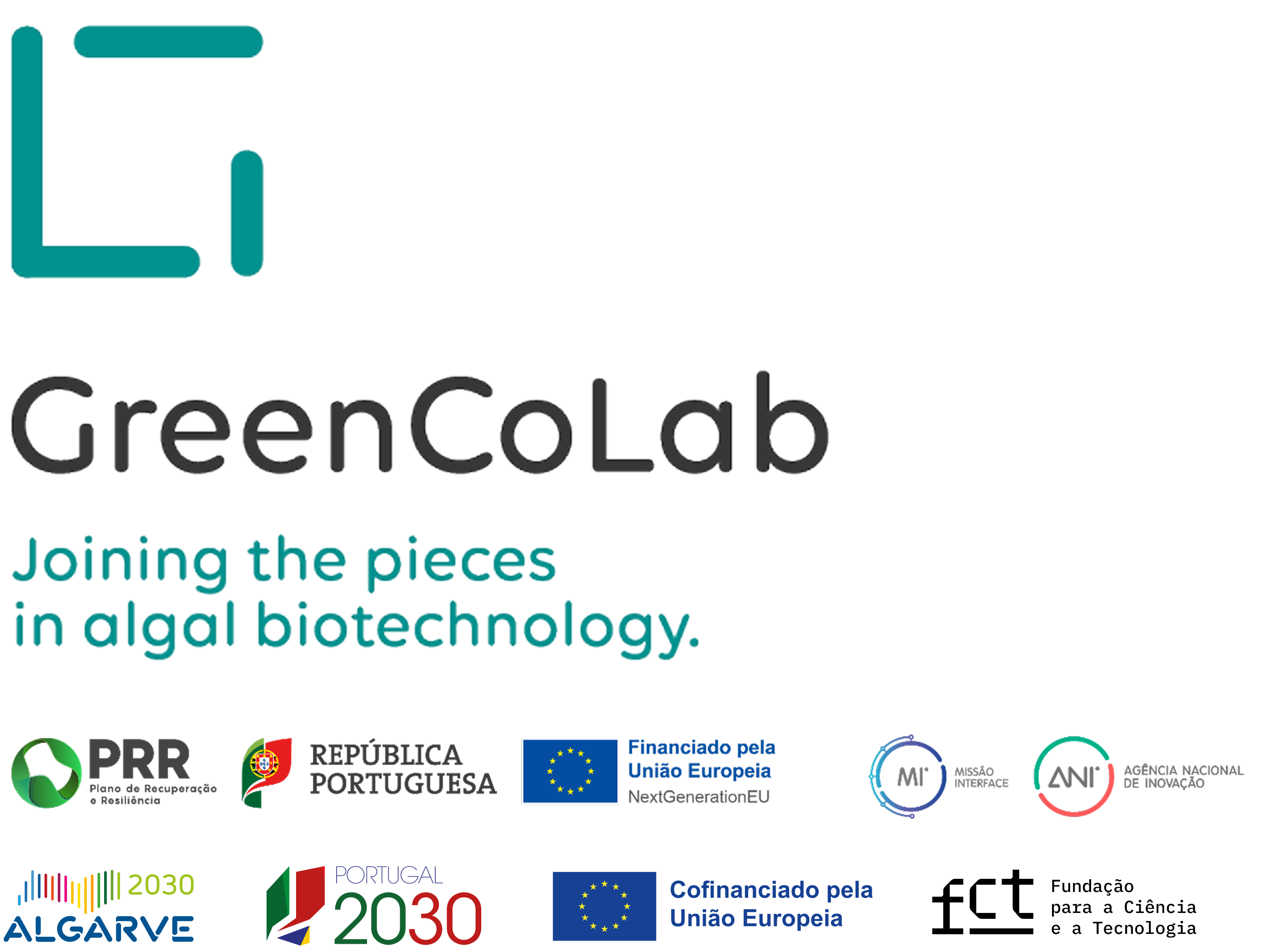

TITLE
Flashing lights affect the photophysiology and expression of carotenoid and lipid synthesis genes in Nannochloropsis gaditana
JOURNAL
Journal of Biotechnology
AUTHORS
Serena Lima, Jep Lokesh, Peter S. C. Schulze, Rene H. Wijffels, Viswanath Kiron, Francesca Scargiali, Sebastian Petters, Hans C. Bernstein, Daniela Morales-Sánchez
ABSTRACT
Nannochloropsis gaditana is a promising microalga for biotechnology. One of the strategies to stimulate its full potential in metabolite production is exposure to flashing lights. Here, we report how N. gaditana adapts to different flashing light regimes (5, 50, and 500 Hz) by changing its cellular physiology and the relative expression of genes related to critical cellular functions. We analyzed the differential mRNA abundance of genes related to photosynthesis, nitrogen assimilation and biosynthesis of chlorophyll, carotenoids, lipids, fatty acids and starch. Analysis of photosynthetic efficiency and high mRNA abundance of photoprotection genes supported the inference that excess excitation energy provided by light absorbance during photosynthesis was produced under low frequency flashing lights and was dissipated by photopigments via the xanthophyll-cycle. Increased relative expression levels of genes related to the synthesis of carotenoids and chlorophyll confirmed the accumulation of photopigments previously observed at low frequency flashing lights. Higher differential mRNA abundance of genes related to the triacylglycerol biosynthesis were observed at lower frequency flashing lights, possibly triggered by a poor nitrogen assimilation caused by low mRNA abundance of a nitrate reductase gene. This study advances a new understanding of algal physiology and metabolism leading to improved cellular performance and metabolite production.



